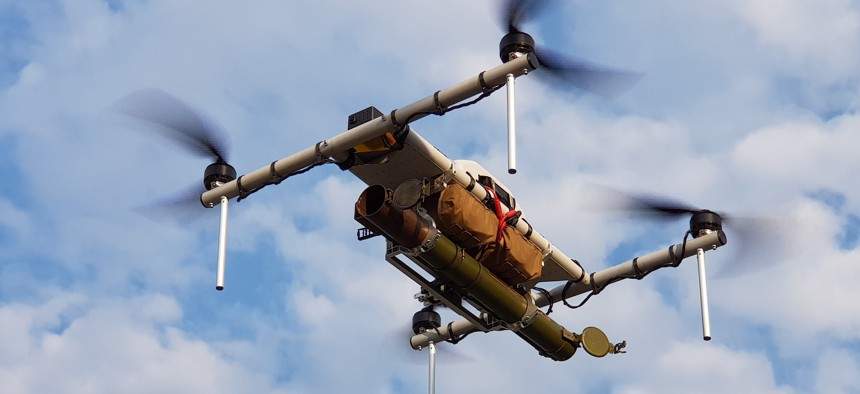
The "Demon" grenade launcher drone from Юрий Касьянов Юрий Касьянов
Ukraine Startup Building Drones with Grenade Launchers
A prototype Ukrainian drone has a grenade launcher. Still unclear: how it’s going to get past Russia’s jammers.
A Ukrainian company called Matrix UAV has developed a small drone called the Demon that can carry guns, explosives, or a rocket-propelled grenade for use against armored vehicles.
Ukrainian engineer and Matrix founder Yuriy Kasyanov posted a video of the prototype drone to his Facebook page on Friday.
“Armed with a grenade launcher, the unit is designed to inflict sudden, precise strikes on armored vehicles, fire points, air defense equipment, and enemy headquarters at a distance of up to 10 kilometers,” Kasyanov says in the post.
He goes on to detail how a kamikaze variant of the Demon could strike up to 20 kilometers away, diving on its target with a 7-kilogram bomb — or up to 90 kilometers out with a 4-kilogram payload.
But the Ukrainians are not the only one with newly armed drones. The Russian Defense Ministry is arming intelligence- surveillance-reconnaissance drones, such as the Orion A and the Altair MALE. Unlike Ukraine, they’ve had the opportunity to test drones, like the easily weaponizable Forpost, in other battlefields — like Syria.
Russia also brings highly advanced electronic warfare, or EW, capabilities to its drone game. In the early days of the conflict, Ukranian commanders complained that Russian forces could readily jam the drones sent to find them — while using their own drones successfully for the same purpose. It’s unclear how that situation has improved for the Ukrainians.
“This UAV is a step in the right direction for close-combat [unmanned aerial vehicle, or UAV], though much will depend on its actual battlefield performance — such quadcopters can be notoriously noisy and may be susceptible to electronic countermeasures,” said Sam Bendett, an associate research analyst at CNA and a fellow in Russia studies at the American Foreign Policy Council. “On the other side of the border, Russians are also working on a variety of close-combat UAVs that involve fixed-wing and multirotor designs, though an increasing emphasis is now placed on surviving comms and radio interference from a potential adversary EW attack. Russians are also putting their UAVs through constant tests either in Syrian combat, or during continuous rounds of drills and exercises. So this Ukrainian ‘Demon’ needs to go through significant testing before its performance claims can be verified.”




